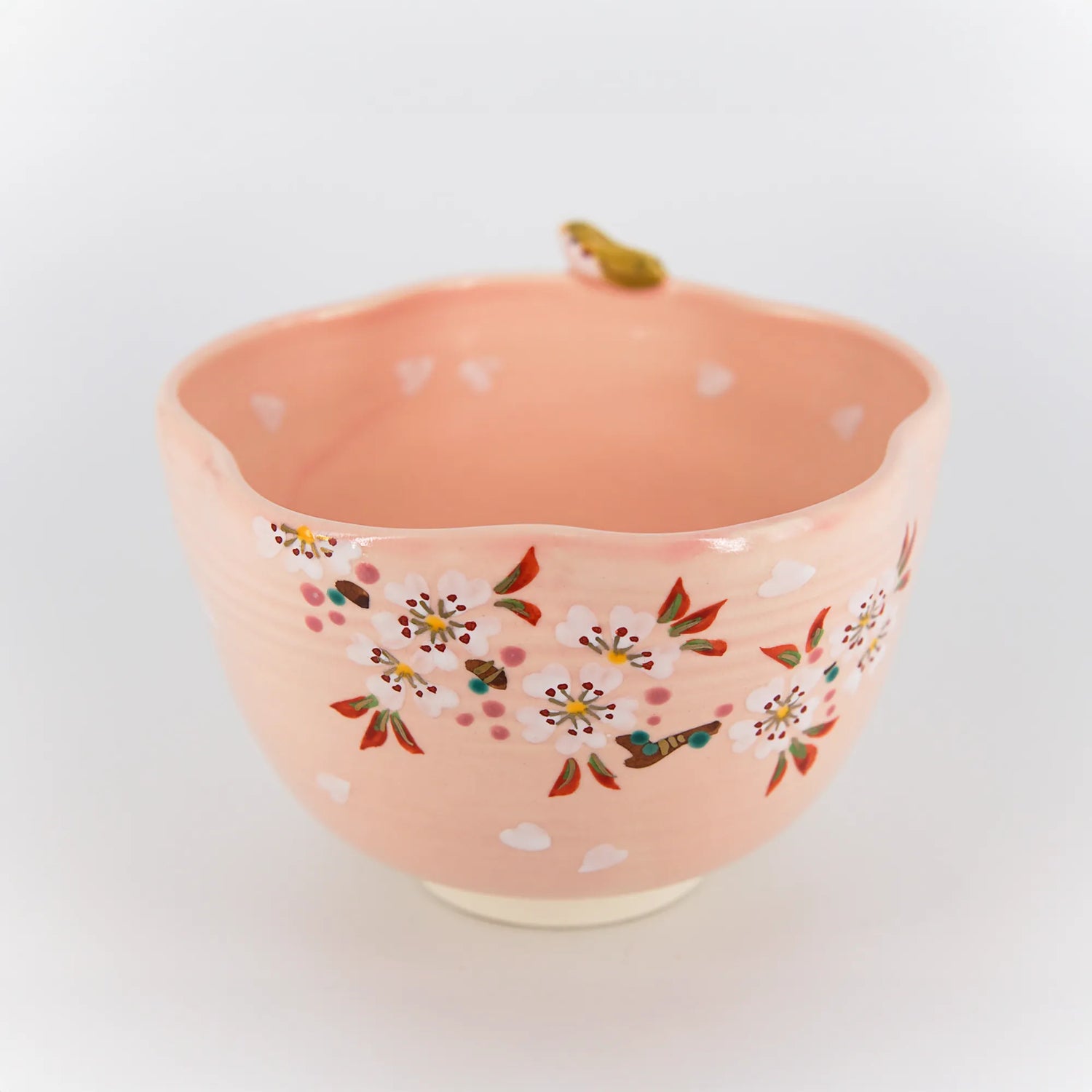Fukuro Obi (Zentsū) – Taishō Roman Florals, Gold Reverse – 480×31 cm
Fukuro Obi (Zentsū) – Taishō Roman Florals, Gold Reverse – 480×31 cm
No VAT charged. (Kleinunternehmer, § 19 UStG).
Because this is a vintage, second-hand item, returns and exchanges are not available. Thank you for your understanding.
Couldn't load pickup availability
- Dedicated customer support for questions or problems
- Free shipping from €49 (within Germany)
Low stock
View full details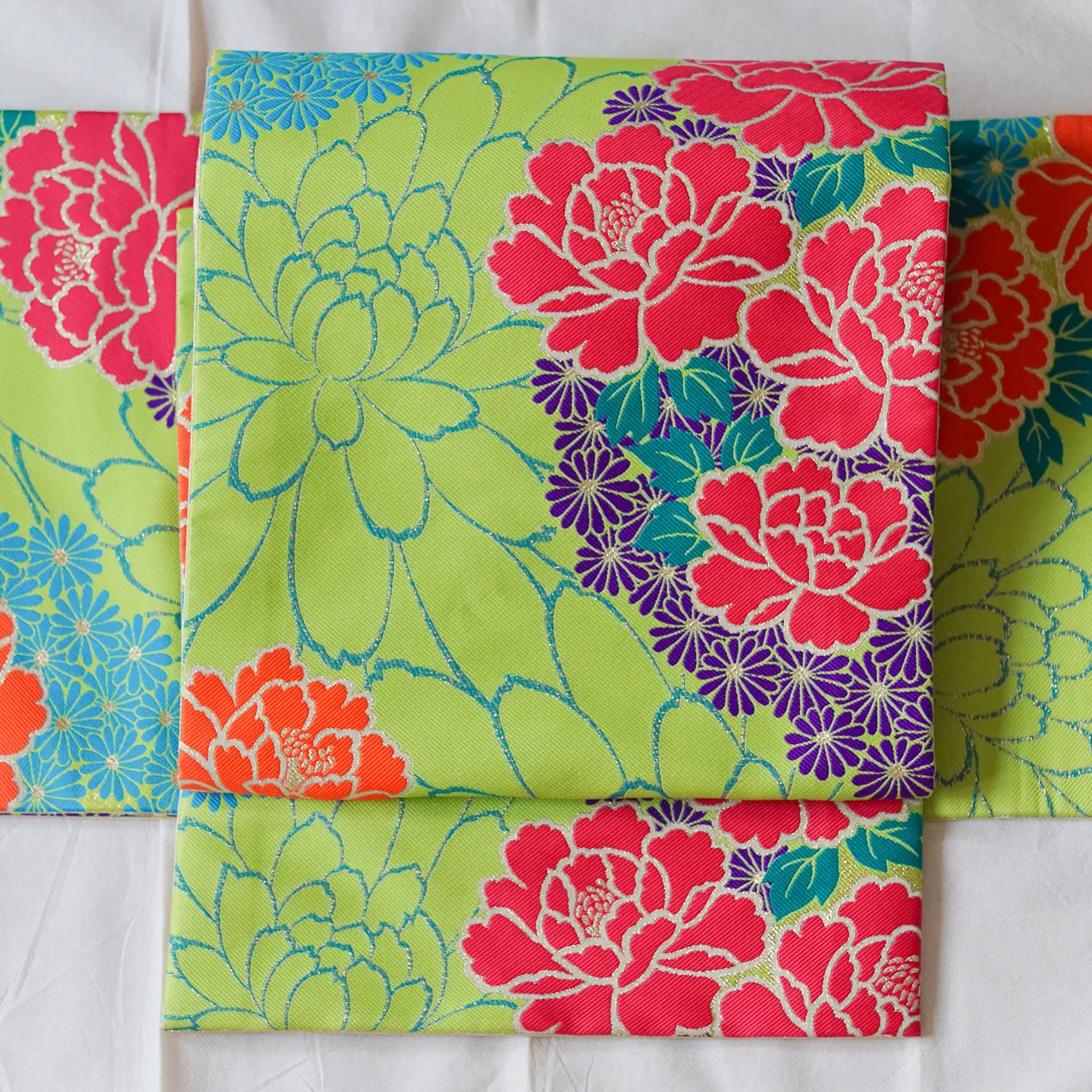
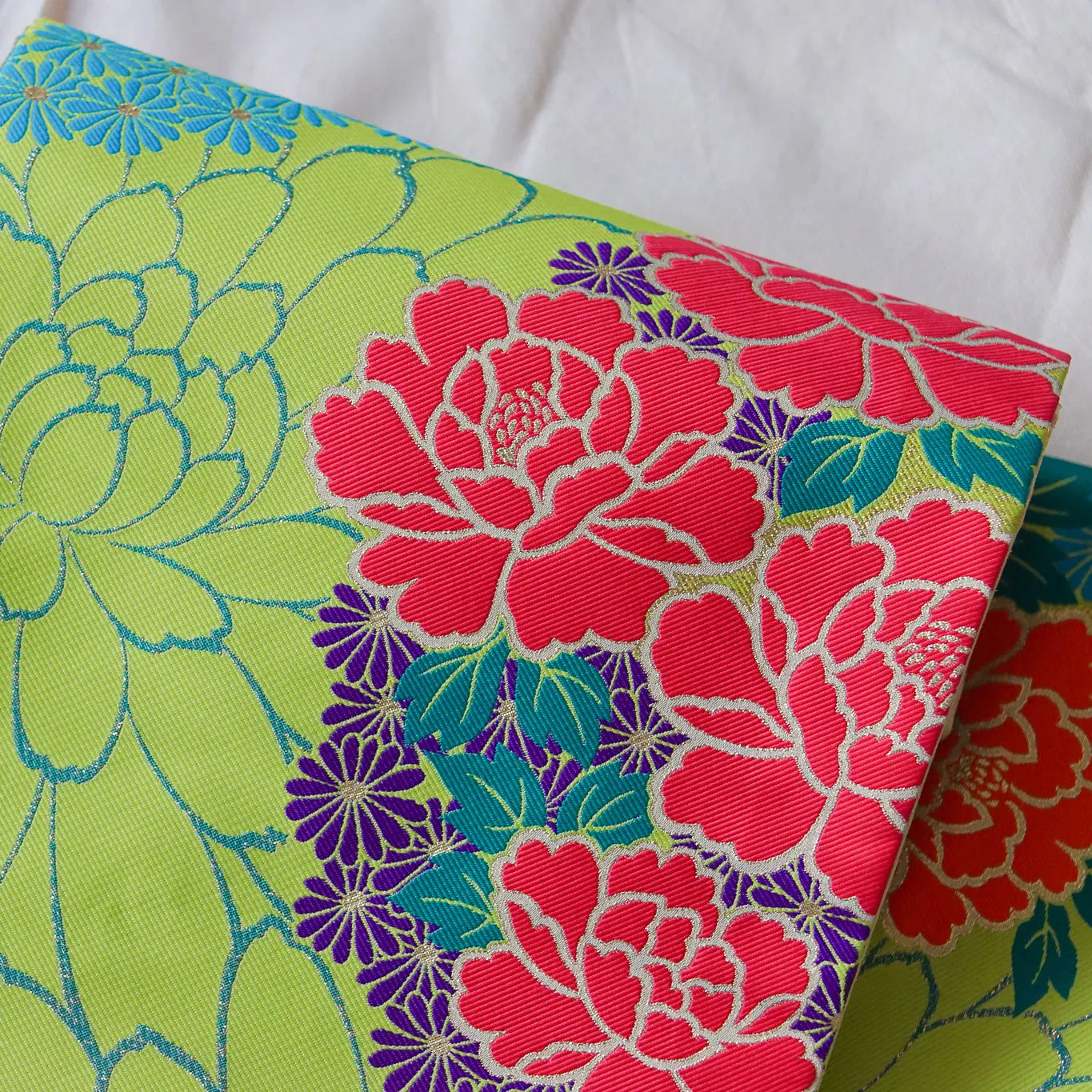
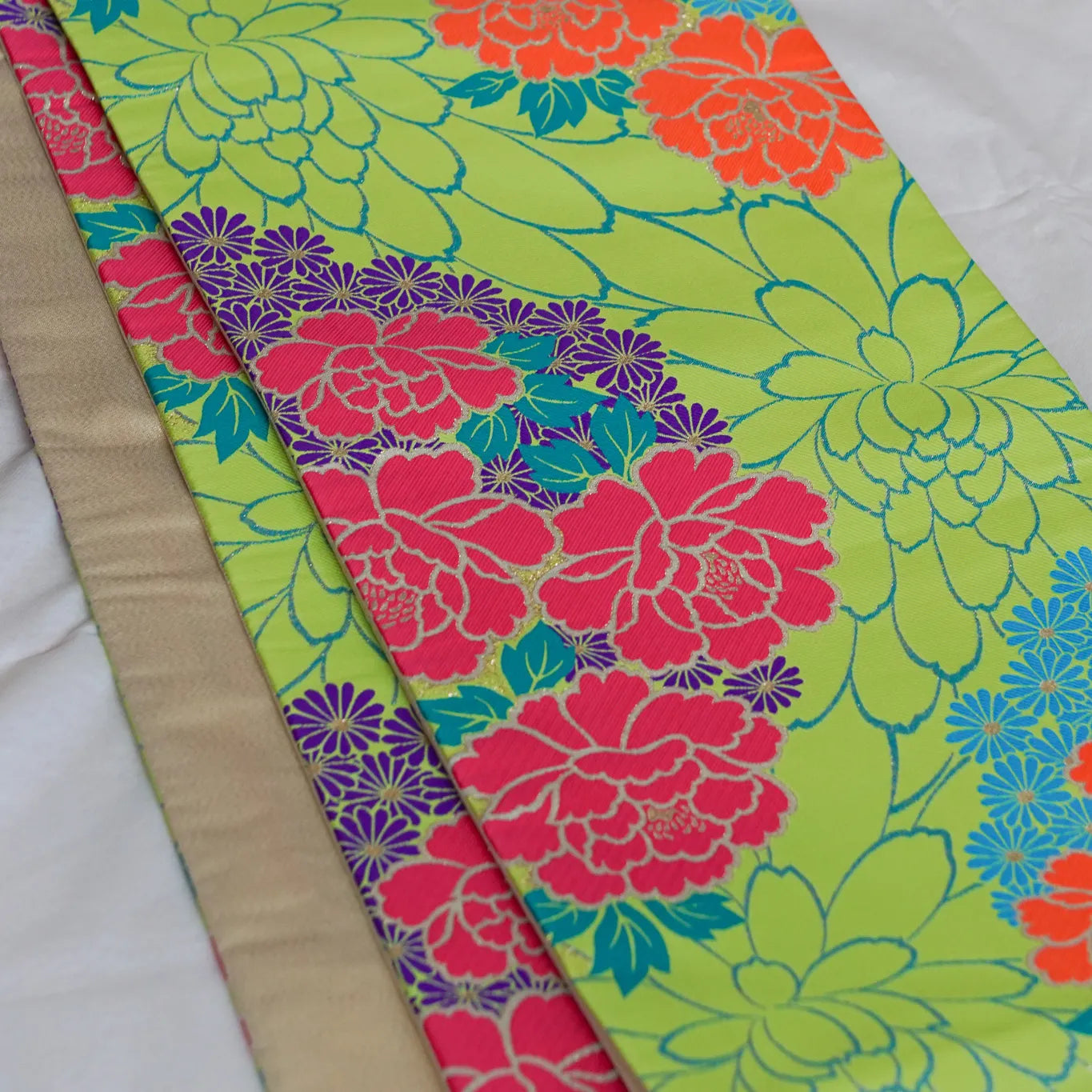
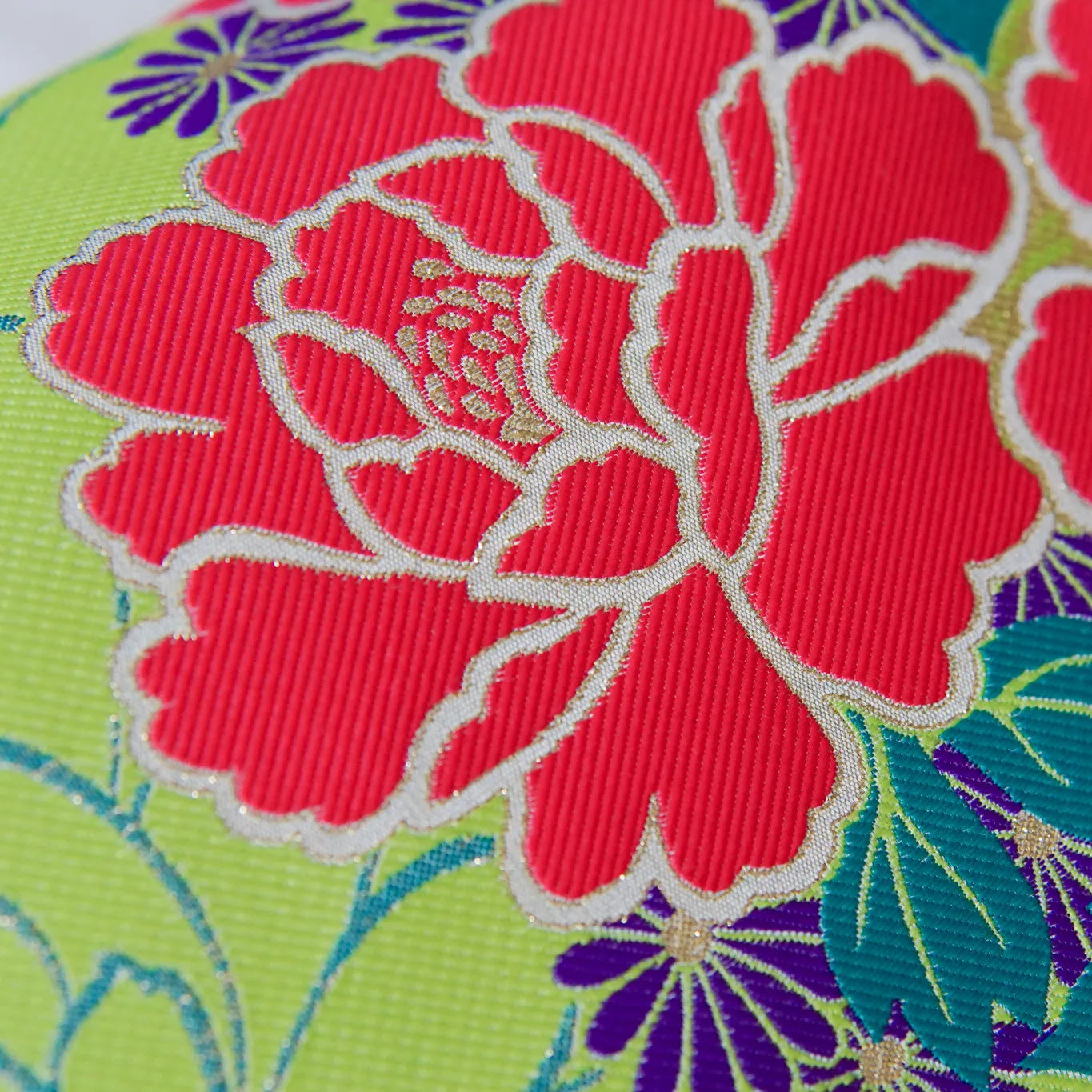
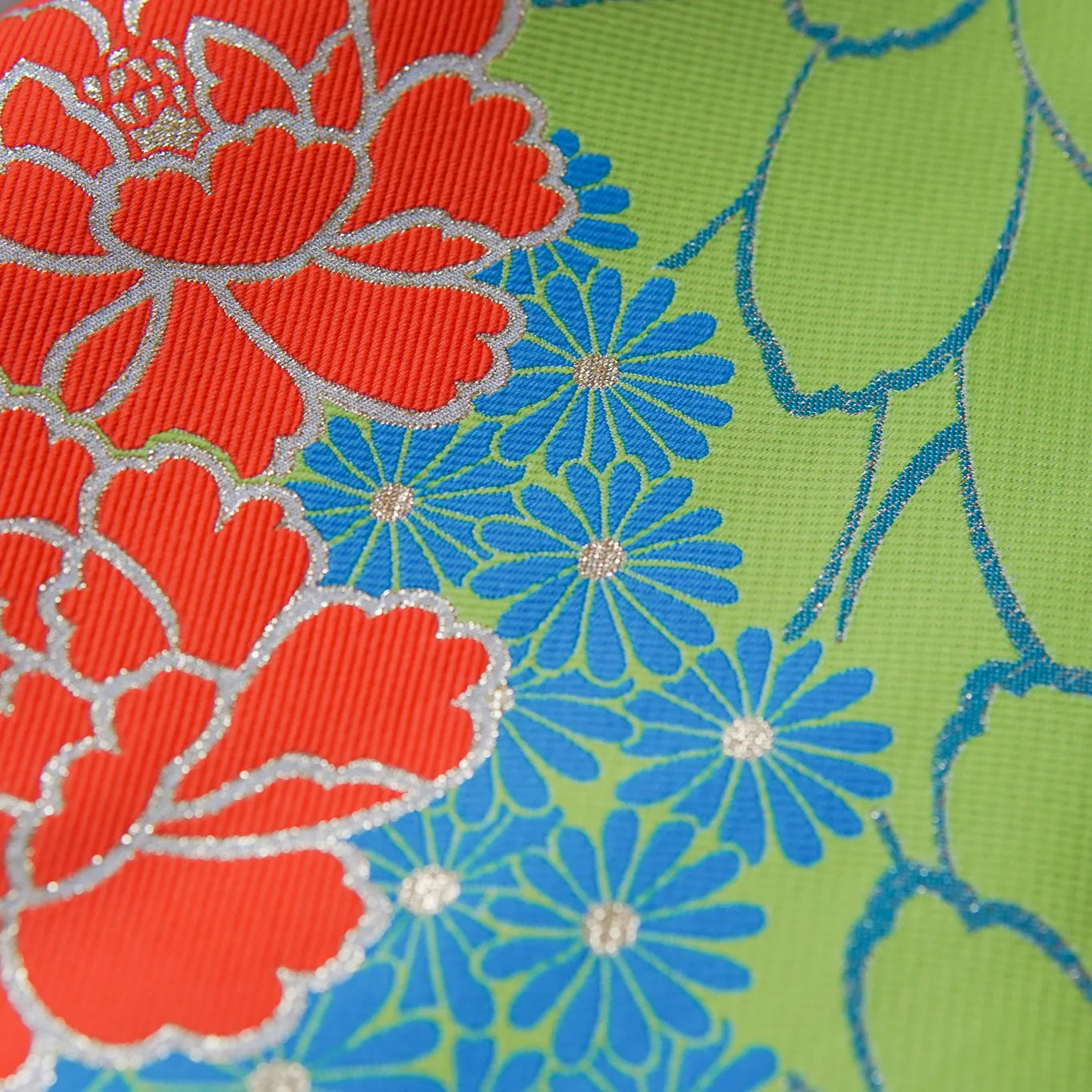
Fukuro Obi (Zentsū) – Taishō Roman Florals, Gold Reverse – 480×31 cm
✿ Description
A vivid Fukuro Obi in the zentsū (全通) style, with the pattern running the full length. Bold florals—peonies, chrysanthemums, and more—in pink, orange, purple, and blue bloom on a yellow-green ground, edged with shimmering metallic threads. The reverse is a plain gold, adding elegance and versatile styling options. The palette evokes the Taishō Roman aesthetic: a confident blend of early-20th-century color sensibility with classic Japanese motifs.
✿ Details
- Type: Fukuro obi
- Style: Zentsū / full-length patterned design
- Design: Peonies, chrysanthemums & mixed florals; metallic thread outlines
- Reverse: Plain gold
- Material: Mixed weave
- Condition: New / unused
✿ Sizing
| Length | approx. 480 cm |
| Width | approx. 31 cm (standard) |
✿ Condition & Notes
Unused, crisp and clean—suitable for formal wear or creative statement styling.
✿ Color & Care
Photographed to reflect true color; slight variations may occur due to lighting/screens. Store rolled; avoid prolonged direct sunlight. Professional cleaning recommended for obis with metallic threads.
Frequently Asked Questions
How do I know if a kimono will fit me?
Height: Length (身丈) ≈ your height ±5 cm (you adjust length with the ohashori fold).
Yuki (裄): Neck center → wrist bone. The kimono’s yuki should be close (±2 cm usually fine).
Body width: Maehaba (front) + Ushirohaba (back). As a rough guide, this total should exceed half your hip circumference for good overlap.
What do the kimono types mean?
Komon: All-over small pattern; casual to smart-casual.
Iromuji: Solid color; versatile/tea practice; semi-formal.
Tsukesage / Hōmongi: Pattern flows across seams; semi-formal to formal.
Furisode: Long sleeves; formal.
How are conditions graded?
Rank SS: New, never worn.
Rank S: Like new.
Rank A: Minor, hard-to-notice vintage nuances.
Rank B: Small visible age/marks; wearable.
Rank C: Noticeable issues; best for styling/display/projects.
Care: can I wash a kimono?
Silk: Dry clean (kimono-experienced cleaner). Air in shade 1–2 h after wear; avoid direct sun. Light steam from reverse with a press cloth.
Polyester: Gentle/cold cycle in a laundry bag; line-dry in shade; no tumble dry.
Gold/embroidery/yuzen: Avoid rubbing, soaking, high heat.
How to reduce vintage odors?
Air in shade over several days; store with neutral charcoal or deodorizing sachets. Don’t spray perfume directly on silk.
What do I need to wear a kimono properly?
Juban (with han-eri), 3–4 koshihimo, 1–2 datejime, eri-shin, obi-ita.
For nagoya/fukuro obi: add obi-makura, obiage, obijime. Optional: korin belt, small towels for shaping. Footwear: tabi & zōri.
